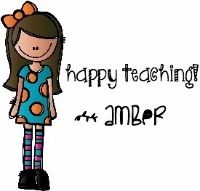Chapter 7 is the last chapter in The Next Step in Guided Reading. This chapter is about helping your struggling readers. What I love about this book is that it's applicable for grades kindergarten through eighth grade, as it says on the cover. What a struggling reader will look like will differ in kindergarten versus eighth grade but you can use the same strategies to help those kiddos.
We all know that so many factors affect student learning. Things like home life or attendance are out of our control as teachers. But there are things we can control (behaviors, strategies and skills) and that's the focus of this final chapter.
1. To give your struggling readers what they need, there are several things to consider. You have to analyze your teaching to make sure you're addressing meaning, decoding, fluency and comprehension. You need to analyze student assessments to see what the student is needing help with. Third, ask someone else to observe the student during guided reading and independent reading. I realize this last step may be not possible for all teachers but the reasoning is that fresh eyes and ears may see or hear something you've missed. And finally, after gathering your evidence, come up with a plan to help your struggling student(s).
2. The chapter then talks about targeting problem areas for emergent, early and transitional readers. This is where you figure out where the break down is occurring and implement activities to help with those areas. With each type of reader, there is a chart listing problem areas and actions to use for each. I like how thorough each chart is and the suggested activities.
3. The third thing I learned is the importance of guided reading. Yes, intentionally planning for each of your guided reading groups takes time. And we all know how little time it seems we have. But it's worth it. I like how Jan Richardson puts it: "Changing the way you teach reading is not easy. There will be days when you will think you will never get it right. The good news is you don't have to get it right in order for guided reading to work. You just have to do it - and then reflect on your teaching and on your students."
Reading this book at the beginning of the school year is really perfect timing. As a kindergarten teacher, our first two weeks of school are staggered, with a few kids coming each day for half the day. This is our first full week of kindergarten starting this week, so it's just the right time for me to have guided reading on my mind and how I want to make it even more meaningful this year!
1. One thing I want to do differently is introduce guided writing into my guided reading groups. "By spending a portion of the guided reading lesson supporting students' writing, you can help students internalize a skill or strategy that has already been taught during writing workshop." This will take some planning on my part but I think it will be beneficial for my students. At the beginning of the year, this might look like learning the correct pencil grip and how to use the whole line to write on but I can picture it becoming so much more as the year progresses.
2. I also want to be more consistent in assessing my students. I have three guided reading groups and I differentiate among those three groups but I don't differentiate all that much within each group. And I need to. Just because one student needs to work on decoding doesn't mean the whole group does. So I want to be more aware of what each student needs this year.
I don't have a Teachers Pay Teachers store (but hope to someday!) but I have found a few goodies to pass along!
This is a "Guided Reading Snapshot" that includes lots of ways to keep track of what each student needs to work on and also what his/her strengths are.
There are also lots of good resources on the Scholastic website. You can download a Home Reading Interest Survey to send home to parents and also a sample lesson plan.










